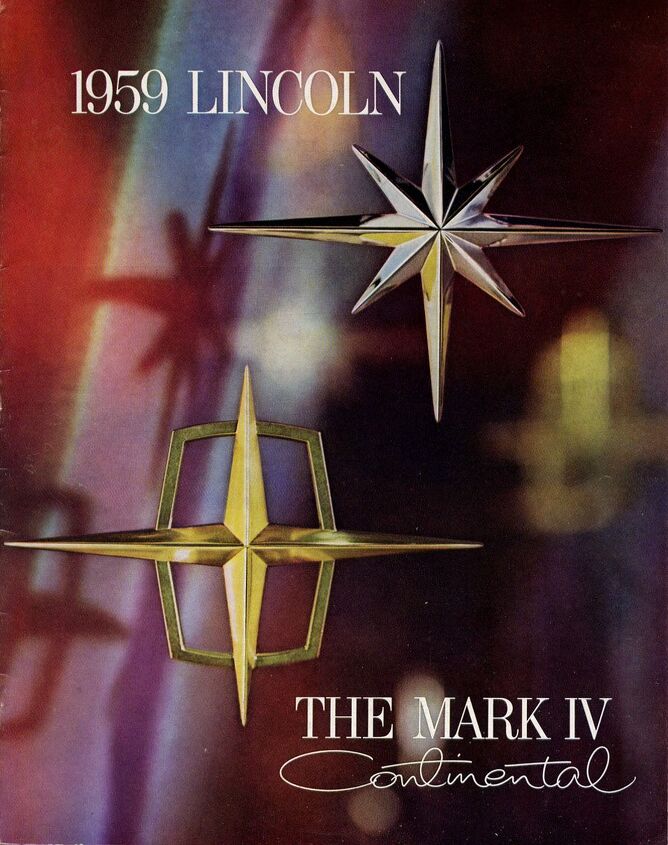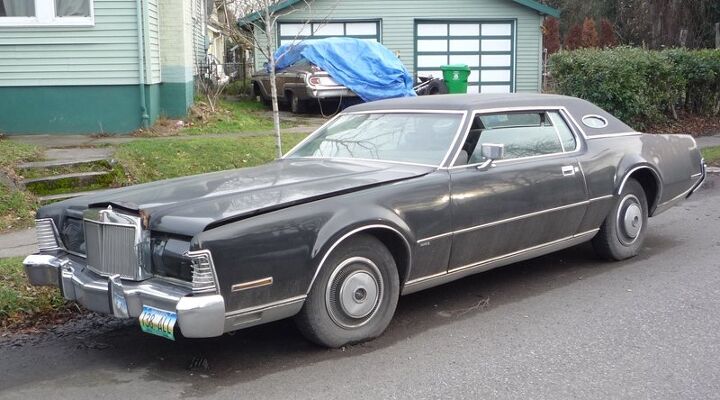#MarkV
Rare Rides Icons: The Lincoln Mark Series Cars, Feeling Continental (Part X)
We resume our tale of the Mark series cars today, during a period of recovery for Lincoln and their Continental lineup. The introduction of all-new unibody Lincolns in 1958 saw questionable over-the-top styling debut right at the start of a sharp recession. Most people didn't enjoy the looks of the new Mark III. Lincoln toned down the glitz for the '59 models, with better-integrated styling cues here, and less bulbous sheet metal there.
A new naming scheme arrived in 1959, Mark IV Continental, as Continental became a version of Mark. At the same time, Ford attempted to take the Continental upscale via the introduction of the more spacious (but not longer outside) Mark IV Continental Town Car and Limousine.
With a better US economy, Lincoln improved its sales figures considerably in 1959. However, the portion of those sales that were Continental models dropped by almost 12 percent. However, given all the millions Ford poured into its new Lincoln models it was not prepared to ditch them after just two years. There was a third year of the unibody Mark, with the highest series number yet: V.
Rare Rides Icons: The Lincoln Mark Series Cars, Feeling Continental (Part IX)
Our Lincoln Mark Series coverage continues today, and we pick up at the end of 1958. After Ford dumped many millions into the Continental Division and quickly shut it down, the company then spent a lot more money to develop an all-new unibody platform for Lincoln’s usage. In an attempt to woo customers away from Cadillac, the new Lincolns for 1958 wore some of the most shocking styling ever to come from Detroit.
All three of Lincoln’s new “models” were really just trim levels of the same car. Said models included Capri, Premier, and the top-tier Continental Mark III, which was not a Continental except in trim badges. At least it had a Breezeway window! At the 1958 launch of Lincoln’s new unibody line there was a steep recession across the globe, as lots of Americans decided they didn’t actually need a new car every year or two. Nevertheless, the Continental Mark III made up 62 percent of Lincoln’s sales that year. Lincoln veered off on a revised course in 1959, hoping to improve its lot with some more “new” models.
Parked in Drive: 1979 Lincoln Continental Mark V Bill Blass Designer Edition
It’s difficult to imagine this happening today: Picture a major domestic automaker announcing the last hurrah of its largest, most opulent personal luxury car with the usual array of special edition models. But instead of letting its own designers handle the “collectible” trim-and-paint kits, it employed a fleet of famous, mostly European fashion houses to send off their last-generation model in style.
From 1976 until the early 1990s, Lincoln did exactly this for its flagship Continental coupes.
Piston Slap: Reverse Light My Way Home, General Motors!
Jon writes:
Sajeev,
I read this column on lighting, thanks for the information! That leads me to a question…
What is up with Chevy/GM truck and SUV reverse lights!?!?!?! Why do they come on when their drivers use their lock remotes?????
It is crazy going through parking lots these days with all the SUV reverse lights coming on for no good reason. Help me understand please.
Curbside Classic: 1973 Continental Mark IV
Ironically, the Continental Mark IV is the most “American” car ever. It’s the ultimate counterpart to that most continental/ European car ever, the VW Rabbit/Golf Mk I that appeared about the same time. The Golf was a brilliant triumph of modern design: space efficiency, economy, light weight, visibility, sparkling performance and handling. And in Europe, the Golf became known as the “classless” car; one that didn’t make a statement about its owner. The Mark? Well, take all those qualities, turn them upside down, inside out, and then toss them out the window. Americans have long had ambivalence about “modern” anyway; it hinted at socialistic and intellectual influences that didn’t always sit so well. The most modern American car ever was the Corvair, and look how that turned out. Even the Kennedy Lincolns were a touch too modern. America was ripe for the first true post-modern car, and Ford was the obvious company to make it.




















Recent Comments